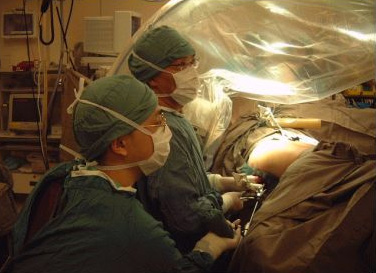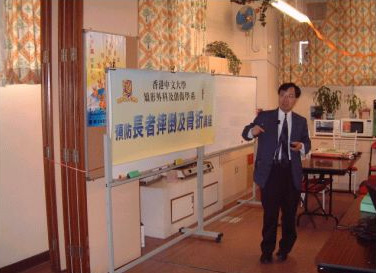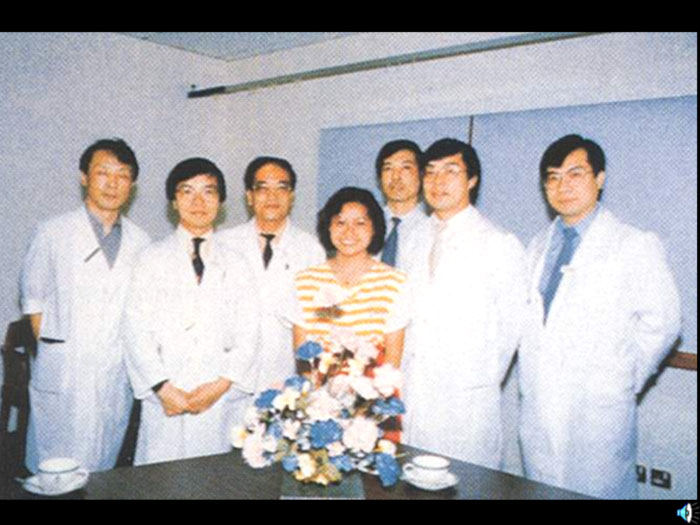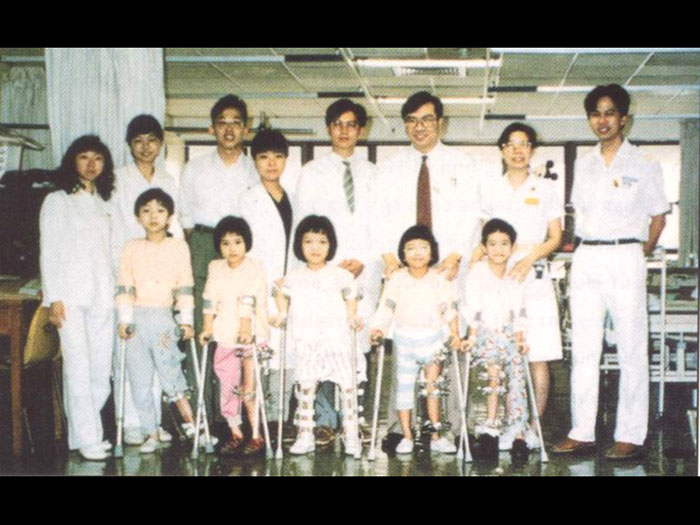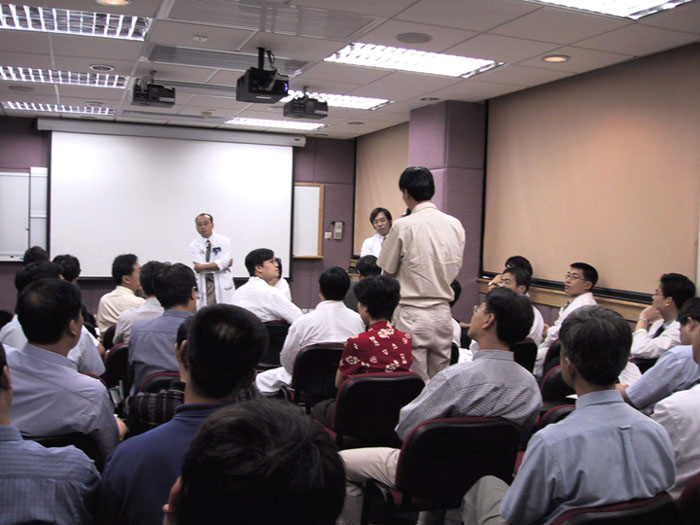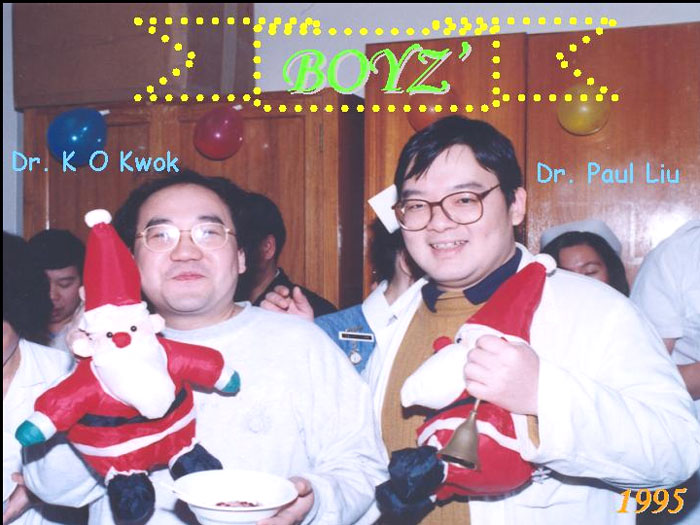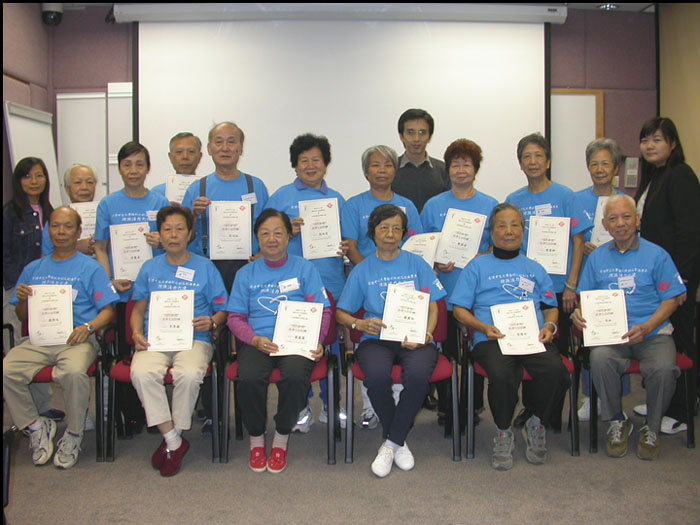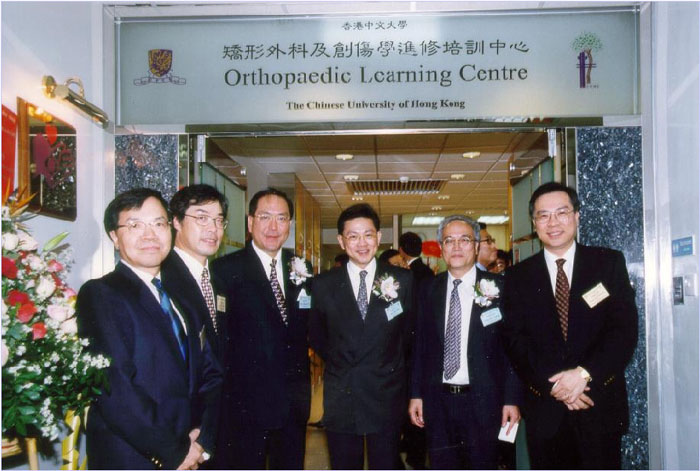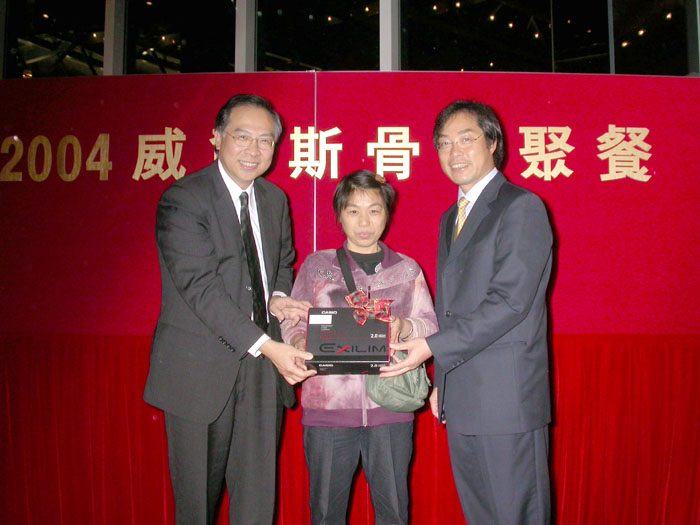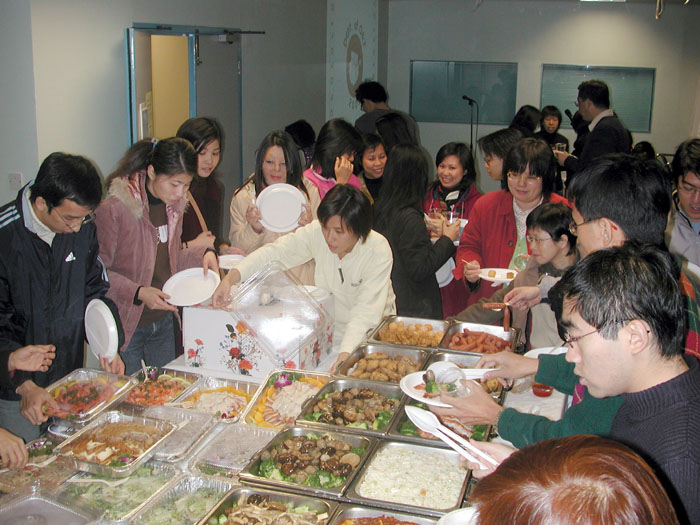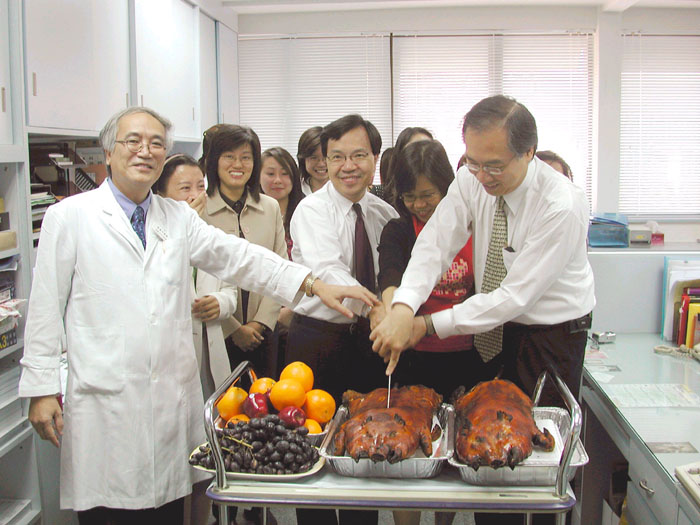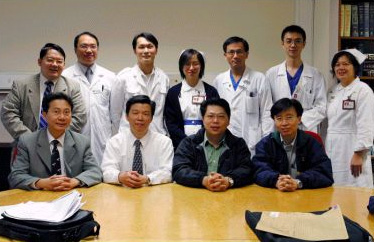
Department of Orthopaedics & Traumatology
¡@
Abstract of Adult Joint Reconstruction Team
Total Joint replacement surgery was being performed in the department since 1984. Adult Joint Reconstruction team was formally established in 1999. During these 17 years, there is a 10-fold increase in the number of total joint replacement surgeries. The case spectrums include hip, knee, shoulder and elbow replacement and also joint realignment procedures. Besides patient care, adult joint reconstruction team is also involved in numerous research projects, presentations in local and international scientific meetings, papers published in periodical journals and patient education. We have started computerization of operated patients' data this year, as this will facilitate patient management and scientific research.

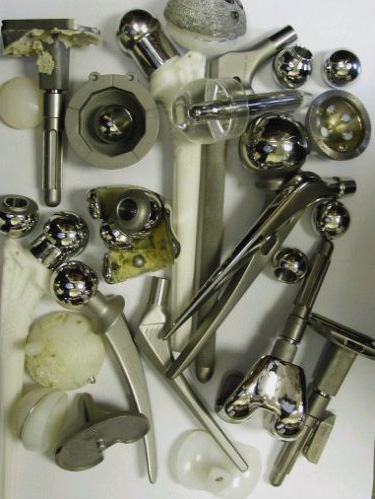
Foot and Ankle Team
The foot and ankle subspecialty was established in 1999 and is the youngest subspecialty in the department. The team consists of one trained foot and ankle specialist, Professor Margaret Wan Nar Wong, and one orthopaedic trainee. The team takes care of a wide variety of foot problems, including painful foot conditions, tendinopathies, diabetic foot, acquired deformities, degenerative arthropathies, neuromuscular diseases with foot involvement, etc. We emphasis on multidisciplinary approach and aim at restoring a pair of painless, stable, planitgrade, shoeable feet for the patients. Foot salvage is one of the major areas of work. A number of special clinics have been established to take care of special requirement of patients, including the Wound, Problem Foot Clinic and Paediatric Foot Clinic. The Dance Clinic, a very unique clinic and the first of its kind in Hong Kong, was established through the joint effort of our department and the Hong Kong Academy of Performing Arts in 1985. Together with their physiotherapist, we provide specialized care to the dancers.
The Foot and Ankle Team's clinical research focuses on foot morphological changes and tendinopathies. To enhance further understanding, our laboratory based research focus on tendon pathology, steroid effect on tenocytes and enhancement of bone tendon junction healing. We actively participate in local and international foot and ankle related activities at various levels, including organization of conference and symposiums, and provision of education at undergraduate and postgraduate level.
The foot and ankle subspecialty is in its early stage of development. It is a vast un-ventured area. We are accumulating complex cases, experience and expertise. There is still a lot of work required in promoting the concept of foot care, arousing interest in this area and recognition of its importance.
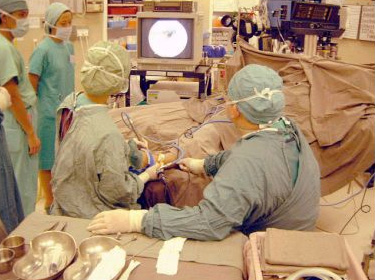
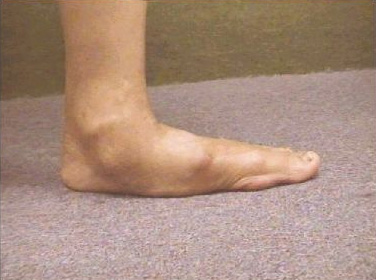
Hand and Microsurgery
1) Service
The Hand and Microsurgery team provides a comprehensive service for all kinds of disorders of the upper extremities, including rheumatological disorders, nerve entrapments, neoplastic conditions, neuromuscular disorders and congenital anomalies etc. We provide a 24 hour replantation service for limb and digit amputations, as well as management of burns of the extremities. We have a comprehensive wrist surgery service. We also provide microvascular surgery service to ischemic limb traumas, reconstruction of limb after tumour resection, free tissue transplantation for wound coverage etc.
The team has an average weekly out-patient load of 320 patients. The total number of elective operations and emergency operations amounted to over 800 and 1000 per year respectively. The former is also on the rise. The Special Hand Clinic registered 3200 patients. The Children Upper Limb Anomalies Clinic registered 950 patients.
Over 400 wrist arthroscopies has been carried out.
B) Highlights of past achievements
1) Clinical development
Hand surgery and microsurgery has undergone tremendous changes over the past 10 years. Microsurgery has been firmly established as a routine service with excellent successful rate. It has been successfully used as a routine surgery for reconstruction in burn injuries, congenital disorders and tumour resection. We have pioneered the study of new donor tissues for tissue transplantation, including skin flaps from the inner aspect of the leg and the foot. Replantation of severed digits has been successfully applied to children, as well as the successful reattachment of the very tip of fingers.
Minimal invasive surgery is an area that has developed exponentially over the past decade. Since 1991, we have pioneered the technique of "percutaneous screw fixation" of scaphoid fracture. Arthroscopic surgery for the wrist joint has taken a great leap over the past few years. Pain in the wrist due to various causes has previously been likened to "pain in the neck" or was described as "low back pain of the hand". With the introduction of arthroscopy of the wrist joint and subsequently arthroscopic surgery using fine instruments, helped to alleviate most of these problems. Since 1996 we have established a comprehensive wrist arthroscopic surgery service which is growing strong. Regular training is provided to all trainees rotated through the team, and the technique has now become as integral part of "core competency" for orthopaedic specialists in training. Arthroscopic surgery is being extended to other joints of the hand.
The management of disorders of the upper limb in children is another area of major development in our team. We have seen the development of a comprehensive service for congenital disorders of the upper limb, the establishment of a myoelelctric prosthesis service, and the visit by some renowned surgeons from abroad.
Treatment of complications of burn injuries to the upper limb is a most challenging area and we have participated in the treatment of patients from many major burn accidents over the past decade, including the Pat Sin Range fire victims. Over the past few years, our expertise has been extended to unfortunate patients in mainland China through support from the Operation Concern as well as the Yu Wing Fund, a charity fund donated to the department.
2) Research
Clinical Research
We have pioneered the clinical application of minimal invasive techniques in the management of hand disorders. The techniques will reduce surgical trauma to patients and promote recovery. The procedures that we have developed include percutaneous screw fixation and bone grafting of scaphoid fractures, percutaneous screw fixation of Bennetts' fracture, arthroscopic wrist and finger joint surgery, arthroscopic assisted resection of wrist ganglion, endoscopic and limited open carpal tunnel release, and percutaneous release of trigger finger. We are currently developing endoscopic surgery for Cubital Tunnel Syndrome, elbow arthroscopy and also endoscopic harvesting of nerve and flaps. The efforts of there studies have resulted in several prize winning presentations at local and international meetings.
Laboratory Research
There have been two major lines of development in laboratory research: nerve regeneration and transcutaneous and transosseous iontophoresis. We have improved and perfected the isolation and culture of Schwann cells from adult nerve fibres, and have studied the mechanisms Schwann cells contribute towards nerve regeneration. It has resulted in a PhD thesis of Dr Lao Jie, from Shanghai Medical University (now the Faculty of Medicine of Fudan University). Currently we are studying the fabrication of artificial nerve conduits and the use of ginsenoside (a traditional Chinese medicinal ingredient) for nerve regeneration. Iontophoresis is a process of drug delivery through tissue layers aided by an electric field. Dr Zhao Li, from Tianjin Hospital, innovated a new form of electric field that greatly enhances the process, and completed a MPhil degree. Mr Walter Lui further pursued the idea and in his MPhil thesis he studied the effects of iontophoresis on large non-ionic molecules. He later went on to study the transcutaneous iontophoresis of interferon. Currently we are collaborating with Dr Zhao to study transosseous iontophoresis of antibiotics.
We have also received a few prizes for presentations for our laboratory work at scientific meetings.
3) Teaching
Disorders of the hand is an important component of the undergraduate curriculum. There are sessions on common hand injuries in the third year of the curriculum, and sessions on nerve disorders and painful conditions of the hand in the final year. In addition, "lumps and bumps" of the hand are common problems at the clinic and students are taught on their identification and principles of management.
The Hong Kong College of Orthopaedic Surgery requires a minimum of 3 months training in Hand Surgery within a 4-year programme for qualification as a specialist orthopaedic surgeon. Our team offers a very strong training programme in Hand Surgery and is one of the recognized training center.
In addition we have been running laboratory based microsurgery training courses at the Orthopaedic Learning Centre to enable surgeons, trainee or experienced alike, to develop their skills in microsurgery. There courses were well subscribed by surgeons from different surgical specialties.
C) Future Developments
The next decade will be another challenging time for all of us. Technology will enable us to develop further into minimal invasive surgery using endoscopy. We can foresee the wider application of arthroscopic surgery for the elbow and joints around the hand. A better understanding of nerve regeneration will enable us to develop new strategices for the management of major nerve injuries, such as complete Brachial Plexus palsy or spinal cord injury. A clinically applicable artificial nerve graft will not be too far from being a reality. Technology will also enable us to use "neuro-prosthesis" such as functional electrical stimulation for tetraplegia patients. We shall also target our efforts towards some other disabling and yet unresolved problems in surgery, such as the treatment of chronic arthritis of the hand, including the many deformities caused by tophaceour gout; the child born without fingers, or the child who is haunted with a massive haemangioma in his limb.
1) Priorities
To further expand and consolidate the application of endoscopic assisted minimal invasive surgery for the upper limb, to develop clinically applicable programmes in nerve regeneration, and to develop a comprehensive programme for tetraplegia patients including the use of functional electrical rehabilitation.
2) Opportunities
We see the development of a cluster service of Hand Surgery for North-East New Territories an important and significant milestone. The development of cluster based service will advance the development of surgical expertise in selected areas. We shall also make use of this opportunity to further consolidate our training programme and to develop into a comprehensive training programme in Hand Surgery that will claim excellence regionally and internationally. Further collaboration with renowned institutions in China will enable the continuation and expansion of some of the basic research that we have started and will bring them to a new stage.
Prepared by LK Hung
May 15, 2002
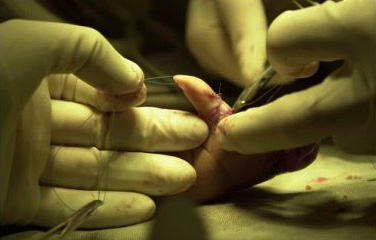
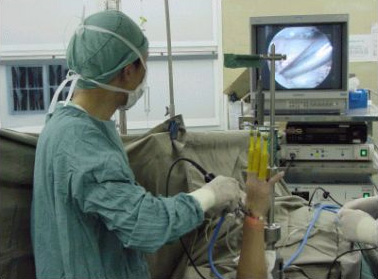
The Paediatric Orthopaedic Team
A subspecialty team headed by Prof Jack Cheng within the Department established since 1984. It provides a general comprehensive clinical service to all children and adolescents with Orthopaedic and Trauma related diseases. In addition, highly specialised tertiary services in Scoliosis surgery, congenital limb anomalies, limb lengthening and reconstruction, care of neuromuscular diseases and cerebral palsy problems are provided. The team serves 26 dedicated inpatient beds and 10 specialised clinic and combined multidisciplinary clinics with more than 10,000 outpatients yearly. Being an academic unit, the team is also actively involved in all levels of undergraduate teaching and postgraduate training, clinical and research fellowships as well as basic and clinical research activities. The main area of research focus includes childhood injury prevention research, research related to the etiology, neuropathology, bone mineral status of adolescent idiopathic scoliosis, enhancement of bone fusion, biomaterial and tissue engineering researches.
On looking ahead, the team will strive to upkeep its commitment "to provide the highest quality service in patient care, research, education and teaching for medical students and postgraduate training". The team will also further enhance, develop and collaborate with its established link with institutions in mainland, the Asian region and the world in the area of paediatric orthopaedics and related research.
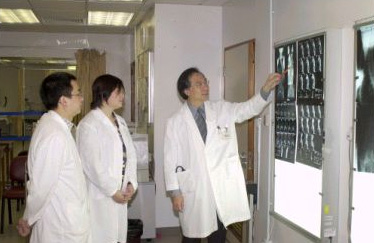
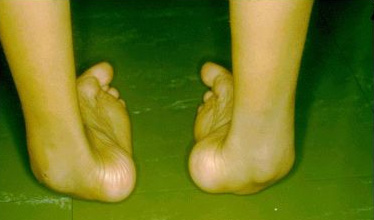
Orthopaedic Rehabilitation
Ever since the establishment of the Orthopaedic Department of the CUHK, the rehabilitation team, led by senior members of the Department, has always occupied a key position in her growth and development. A multidisciplinary team approach is adopted. The orthopaedic surgeon is supported by well-trained nursing staff, physiotherapist, occupational therapist, prosthetist and orthotist, medical social workers and clinical psychologist etc. Our target replacement, geriatric hip fracture, problem back pain and so on. With the establishment of the cluster-baned orthopaedic surgeon led rehabilitation unit in Tai Po Hospital together with the further recognition of the importance of orthpaedic rehabilitation by the local orthopaedic fraternity, there will be a lot of room for development of our rehabilitation team in the years to come.
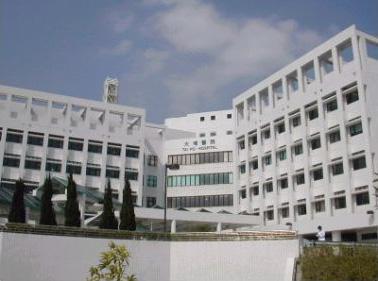

Spine Team
The Spine team looks after all adult patients with spinal conditions. The members include Professor PC Leung, Dr. KY Fung and 3 orthopaedic specialists. A higher trainee of the Hong Kong College of Orthopaedic Surgeons rotates through the team every 6 months. The team is also actively participating in the development of orthopaedic rehabilitation and involving in the management of the Orthopaedic Rehabilitation Unit in Tai Po Hospital, which serves the New Territory East Cluster Hospitals. Spine clinic are among the busiest in the outpatient department. There are 4 clinics per week and more than 100 patients are seen in each clinic. The numbers of spinal operations were on the rising trend in the past 5 years. Majority of cases are related to degenerative conditions. Other diagnoses including spinal instabilities, deformities, infection and tumors are also very common. Wide spectrum of spinal surgeries has been developed which include applications of various implants and different surgical approaches. New techniques have been adopted like the microscopic and endoscopic surgeries. Protocols for pre and post-operative assessment, nursing care plans for common spinal operations and their rehabilitation regimes are standardized. In future, the focus for clinical research will be on further development of minimally invasive spine surgery, treatment of osteoporotic spine and application of traditional Chinese medicine in chronic spinal conditions and metastases.
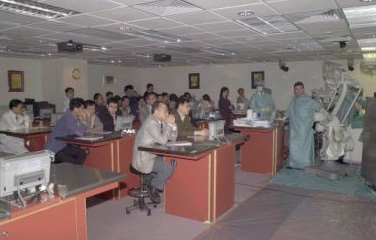
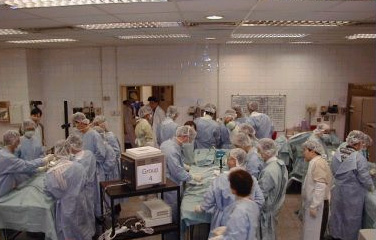
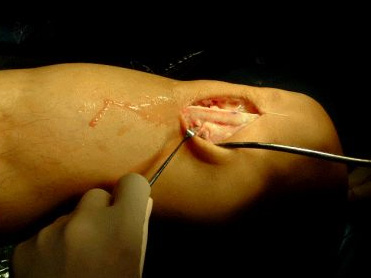
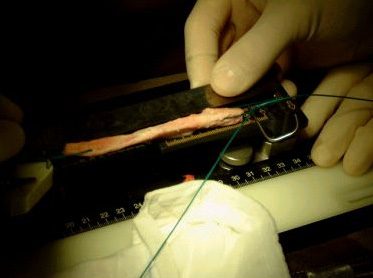
Trauma Team
Team head
Professor KS Leung MD FRCSEd, FHKCOS, FHKAM(Orth Surg), FACS
Clinical Team
Dr. HF Tsui FHKCOS, FRCSEd(Orth)
Dr. Tang N FHKCOS, FRCSEd(Orth)
Specialist
Higher orthopaedic trainee
Basic surgical trainee
House officers
Research Team
Dr. Louis Cheung PhD
Mr. Sammy Siu MPhil
Graduate students
1 Research assistant
2 junior research assistants
The trauma team manages all orthopaedic trauma conditions in adults except spinal trauma, hand trauma and soft tissue injuries of the knee, shoulder and ankle. We also co-ordinate the management of major and multiple injuried patients through major trauma alert call system. We provide consultation to Accident and Emergency Department for musculoskeletal trauma patients and manage emergency trauma surgery. Our teaching program includes teaching round every Tuesday and Thursday morning, journal club, topic discussion and bioskill training program in the Orthopaedic Learning Centre. There are four-day attachment program for the third year and final year medical students every month. Clinical research program includes development and evaluation of the new instruments and implants, application of ultrasound in fracture management and distraction osteogenesis. Development of Surgical navigation system for Orthopaedic Trauma is one of our major programs in the coming years. Basic science research includes the establishment of an osteoporotic animal model with Chinese Mountain goat, enhancement of fracture healing with ultrasound and marrow injection, biological events of neo-osteogenesis, evaluate on implant fixation with osteoporotic animal model, neo-angiogenesis in fracture healing and reconstruction of new growth plates. A comprehensive program on Fall and Fracture prevention for elderly has been carried out with different community centres since 2000.
